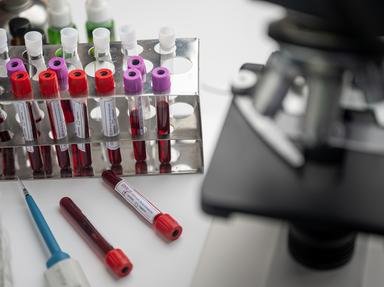Quiz Answer Key and Fun Facts
1. Which of these is a pentasaccharide sugar?
2. Ceruloplasmin is a type of
3. Waxes are
4. An example of a phospholipid is
5. Histone is a type of
6. Which of these is a transferase enzyme?
7. Vitamin A is also called
8. Which vitamin is also called an antisterility vitamin?
9. Which of these is a saturated fatty acid?
10. Antibodies are also called
Source: Author
sriram_gubbi
This quiz was reviewed by FunTrivia editor
crisw before going online.
Any errors found in FunTrivia content are routinely corrected through our feedback system.
